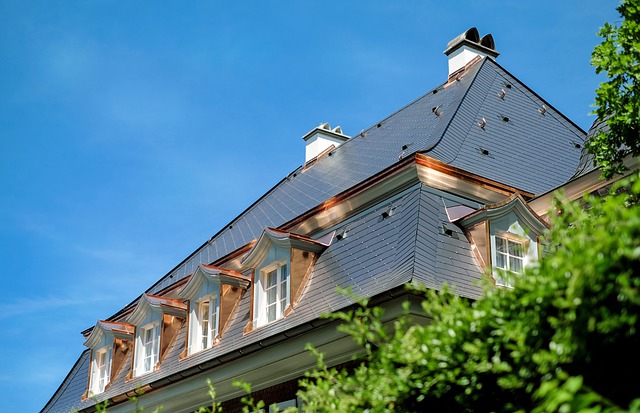Renovating Your Home:
6 Practical Tips on Choosing the Right Roof

Renovating your home is an exciting endeavor that allows you to transform your living space into something new and refreshing. One of the most crucial aspects of home renovation is choosing the right roof. Your roof not only protects your home from the elements but also contributes significantly to its aesthetic appeal and energy efficiency. With numerous options available in the market today, selecting the perfect roof can seem daunting. Here are six practical tips to guide you through the process and ensure you make the best choice for your home.
Consider Your Climate and Environment
The first step in choosing the right roof for your home is to consider your local climate and environmental factors. Different roofing materials perform differently depending on whether you live in a hot, cold, wet, or dry climate. For instance, in areas with heavy rainfall, such as the Pacific Northwest, a durable and water-resistant material like asphalt shingles or metal roofing might be ideal. In contrast, homes in sunny regions like the Southwest might benefit from materials that reflect heat, such as clay tiles or light-colored metal roofs. Understanding how each roofing material interacts with your climate can help you narrow down your options and ensure longevity and performance.
Evaluate Long-Term Costs and Durability
When selecting a new roof, it's essential to look beyond the initial cost and consider long-term expenses and durability. While certain materials may be cheaper upfront, they might require more frequent repairs or replacements over time, ultimately costing you more. On the other hand, investing in a higher-quality material, such as slate or concrete tiles, may come with a higher initial price tag but can last significantly longer with minimal maintenance. Additionally, factor in the roof's expected lifespan and warranty options offered by manufacturers. Understanding these aspects will not only help you make a financially sound decision but also ensure your roof provides reliable protection for years to come.
Choose a Style that Complements Your Home's Architecture
Beyond functionality, your roof plays a crucial role in defining your home's curb appeal and overall aesthetic. When choosing a roofing material, consider its compatibility with your home's architectural style. For example, traditional colonial-style homes often pair well with slate or cedar shake roofs, while Mediterranean or Spanish-style homes may benefit from the distinctive look of clay tiles. Modern architectural designs, on the other hand, might favor the sleek appearance of metal roofing or flat roofs with a durable membrane. Selecting a roof that harmonizes with your home's architecture not only enhances its visual appeal but also adds to its market value.
Professional Installation and Maintenance
Choosing the right roofing material is only the beginning of ensuring a successful roof renovation. Professional roofing services play a crucial role in the installation, maintenance, and longevity of your new roof. When selecting a roofing contractor, look for a company with a proven track record and expertise in handling the specific material you've chosen. Whether you opt for asphalt shingles, metal roofing, clay tiles, or any of the many types of roofing materials available, a skilled contractor can ensure proper installation according to manufacturer specifications and local building codes. Also, roofing professionals offer valuable maintenance services that can extend the lifespan of your roof. Regular inspections, cleaning of gutters and downspouts, and prompt repairs of any damage are essential to preventing costly issues down the road. Many reputable roofing companies provide warranties on their workmanship, giving you added peace of mind that your investment is protected. Additionally, these professionals can offer advice on proper ventilation and insulation, which are critical factors in maintaining your home's energy efficiency and comfort.
Reputation and Credentials
When selecting a roofing contractor for your home renovation project, it's crucial to consider their reputation and credentials. Start by researching local companies and reading reviews from past clients to gauge customer satisfaction and overall performance. A reputable contractor should be licensed and insured, providing you with protection in case of accidents or property damage during the project. Additionally, certifications from manufacturers indicate that the contractor has received specialized training and meets high standards for installation and service. Don't hesitate to ask for references and examples of previous work to ensure the contractor has experience with the type of roofing material you've chosen. A trustworthy contractor will provide clear estimates, timelines, and warranties, giving you confidence in their ability to deliver quality results.
Sustainable Roofing Options
In recent years, there has been a growing emphasis on choosing sustainable building materials, and roofing is no exception. Many homeowners are opting for eco-friendly roofing options that minimize environmental impact and promote energy efficiency. Materials like metal roofing, which can often be recycled at the end of their lifespan, or cool roofs that reflect sunlight and reduce heat absorption, contribute to lower energy consumption and greenhouse gas emissions. Additionally, green roofs—covered with vegetation—offer insulation benefits, improve air quality, and reduce stormwater runoff. When renovating your roof, consider the long-term environmental benefits of your chosen material and its potential to earn certifications like LEED (Leadership in Energy and Environmental Design).

Renovating your home's roof is a significant decision that impacts both its functionality and aesthetic appeal. By following these practical tips—considering your climate, evaluating costs and durability, choosing a compatible style, hiring reputable roofing services, selecting a qualified contractor, and exploring sustainable options—you can navigate the process with confidence. Remember, your roof is more than just protection from the elements; it's an investment in your home's future. With careful planning and expert guidance, you can create a roof that enhances your home's beauty, efficiency, and value for years to come.